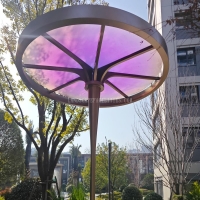Welcome to the website for landscape facilities products and knowledge.
How does the design of the trash can impact its ability to be repaired or refurbished?
The design of a trash can plays a crucial role in determining whether it can be easily repaired or refurbished, impacting its lifespan and sustainability. Here’s how design choices affect repairability:
1. Material Selection: Durable materials like stainless steel or high-quality plastic are easier to repair than flimsy alternatives. Poor-quality materials often crack or degrade, making refurbishment impractical.
2. Modular Components: Trash cans with modular parts (e.g., removable lids, replaceable liners, or detachable hinges) simplify repairs. Integrated designs, on the other hand, often require full replacement if one part fails.
3. Fastening Mechanisms: Screws or clips allow for disassembly and part replacement, while glued or welded joints make repairs nearly impossible.
4. Accessibility: A well-designed interior layout ensures easy access to damaged parts. Overly complex assemblies can deter repair attempts.
5. Standardization: Using universal sizes for components (like wheels or liners) increases the availability of replacement parts, extending the product’s life.
By prioritizing repairability in design, manufacturers can reduce waste and promote sustainability. Consumers should also consider these factors when choosing a trash can to support eco-friendly practices.
Related search:

Recommendation
Metal frame with gradient color acrylic combined with high-end shading landscape facilities